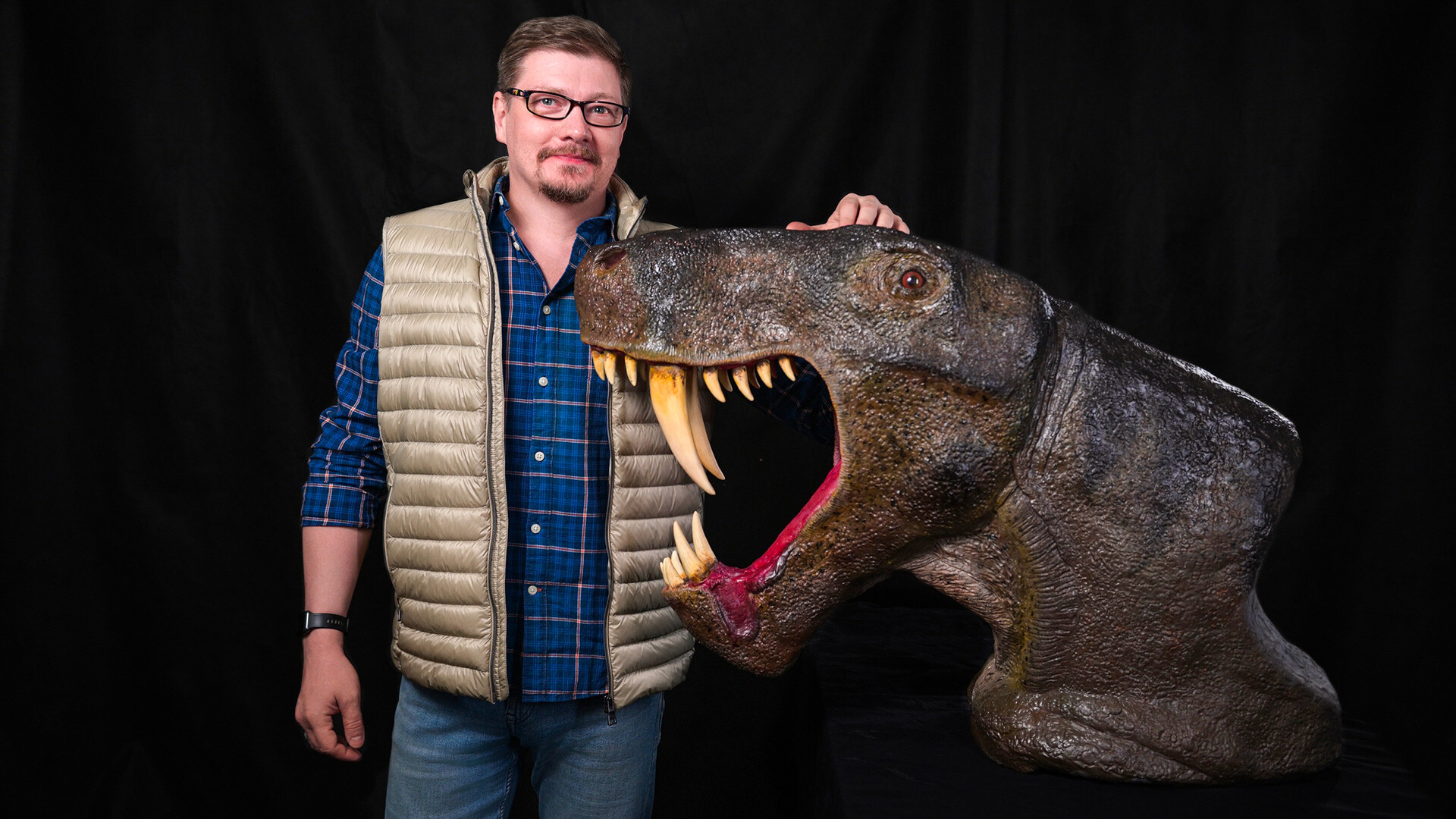
Have you ever heard of ‘Lystrosaurus georgi’, by any chance? This cute herbivore was one of the few species to survive the mass extinction of 250 million years ago.
And this is an ‘Inostrancevia’, a predator with sharp fangs that used to terrorize the prehistoric fauna of the Urals until it died out itself.
This is what a typical dweller of the Perm Region looked like 300 million years ago. It's an ‘Edaphosaurus’. Do you know why it looks so surprised? Because neither the ‘Edaphosaurus’ nor the ‘Lystrosaurus’, not to mention ‘Inostrancevia’, ever saw bipeds. However, we can see them and all thanks to paleoreconstruction!
Paleo-sculptor Valentin Popov makes such realistic and emotionally "affecting" reconstructions of long extinct animals in his ‘Delvesto’ studio that it's worth taking a closer look, even if you are not scientifically inclined.
"I want to put my soul into every sculpture," says Valentin. He is a biologist by education. As a graduate of Tambov State University, he found his vocation not in the scientific field, but in the arts. Valentin is the founder of ‘Delvesto’, the most prominent paleoreconstruction workshop in Russia. You may have seen other reconstructions of ancient humans and animals in the past, but what will strike you about Valentin's figures is their dynamism. His followers on social media never cease to be amazed: "So lifelike", "As if it's about to scamper off" or "What attention to textures, bravo!"
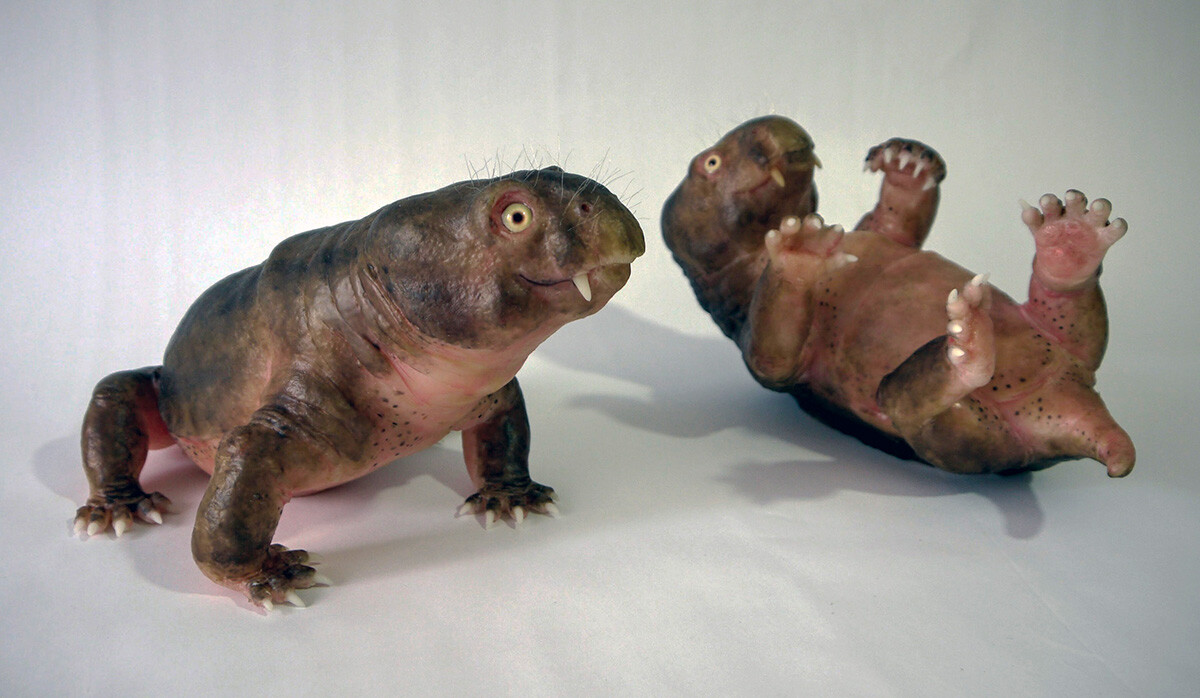
Elph borealis.
Delvesto StudioThe main material Valentin uses is silicone, but it all depends on the figure. "For example, I would use a hard material to make a large creature with a hard scaly body. When I need to add hair (usually natural hair), I take silicone. It imitates skin well, as you can see in the photographs. I am now learning 3D modeling - in other words, I'm planning to design the figures on the computer, print them and then add the final touches." For many of his figures, Valentin commissions 3D models of skulls from other skilled modelers.

Psittacosaurus sibiricus.
Delvesto Studio"Basically, I am self-taught; I simply guessed how things should be done as I went along. When I started doing it some five years ago, there was little information and specialist courses were very expensive," says the paleo-sculptor.
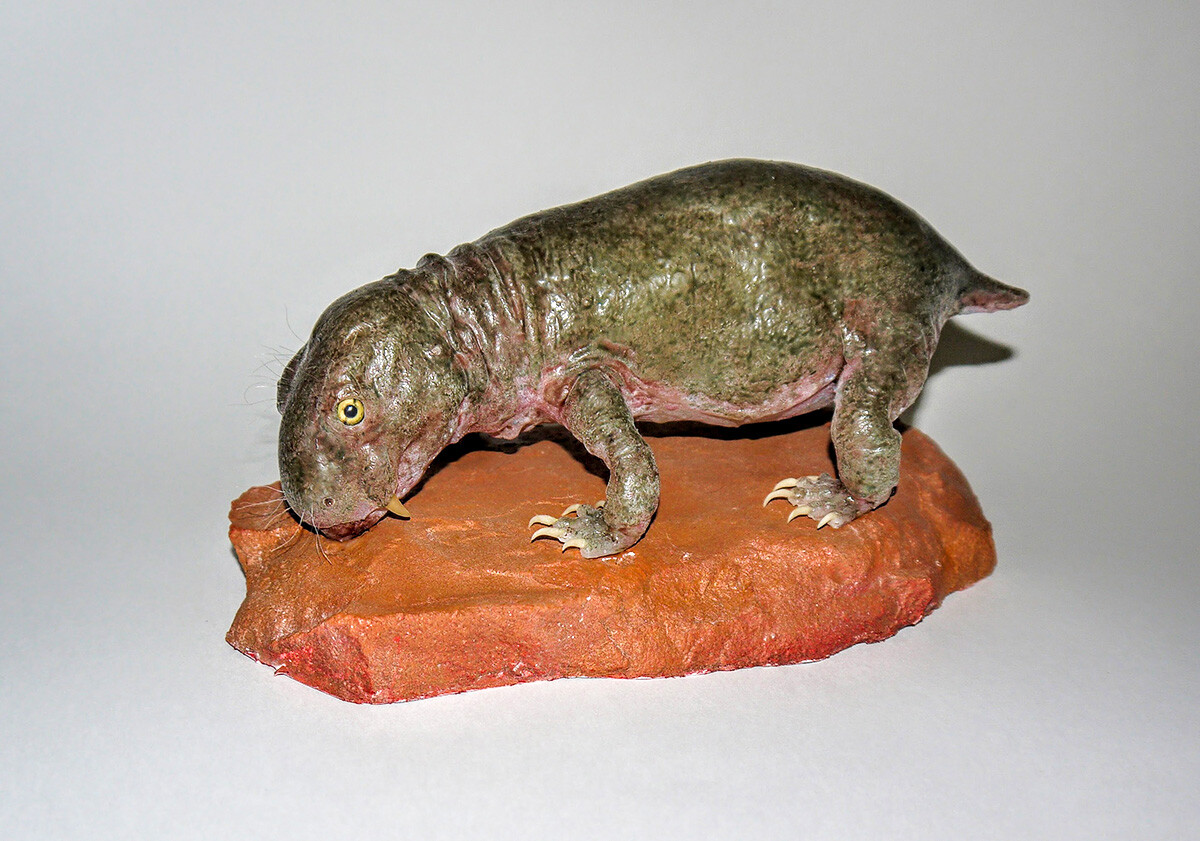
Synapsida Robertia, Valentin's first art work.
Delvesto Studio"I've got some secret techniques for making my figures appear more alive. Facial expressions and movement are important for our human perception. Even when a figure is lying or standing, it will still definitely be animated."
"As a rule, I make creatures from various periods, but I am particularly fond of the fauna of the Permian [300-250 million years ago]. We have a great deal of this fauna, but people know very little about it. It is fauna that existed long before the dinosaurs and it's very interesting," Valentin says. "Paleoreconstruction has only just started developing in Russia. It is important to me that people in Russia should learn more about our region's past and the animals that inhabited it at different times."
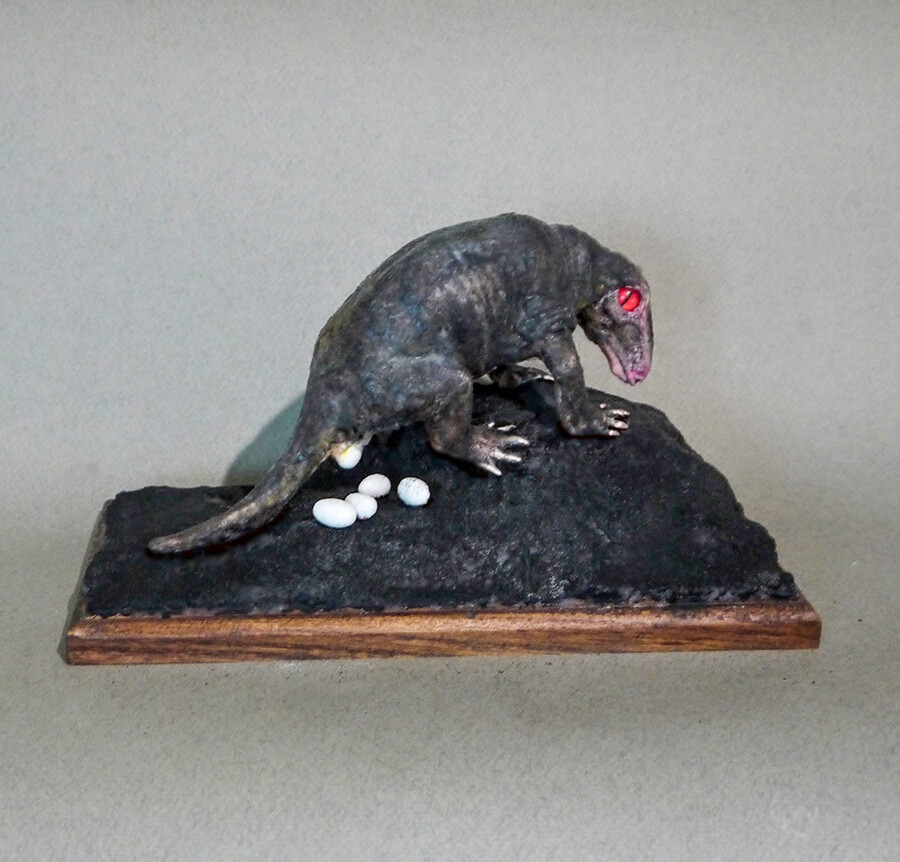
Nikkasaurus tatarinovi.
Delvesto Studio"I always study scientific sources dealing with the particular species that I intend to make, and try to contact people who are specialists in their field," Valentin says. "It's possible that our ideas about particular species will change again in a few years' time and we will see them differently. There are numerous examples of that happening with dinosaur reconstructions. What we do is to follow the discoveries made by scientists."
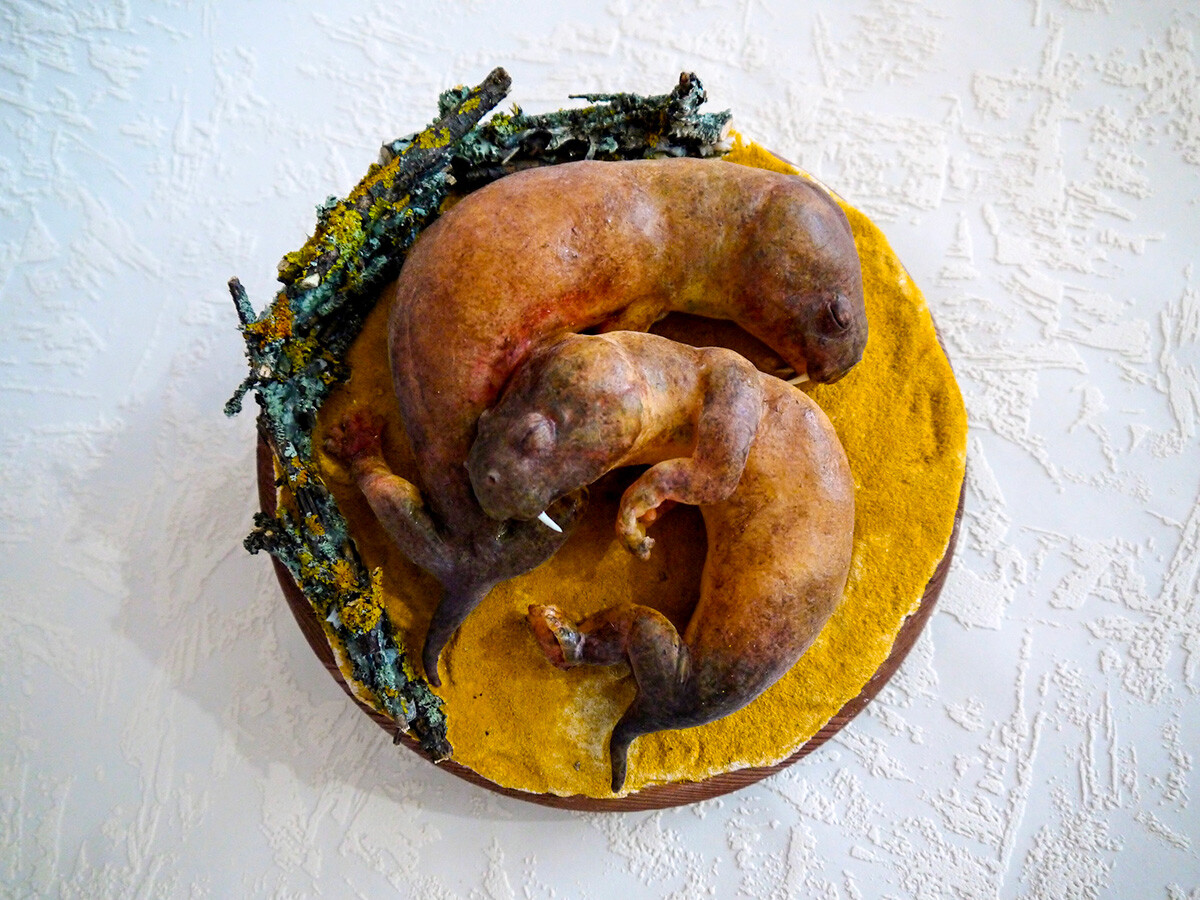
Sleeping Diictodons.
Delvesto StudioHumans evolved relatively recently when measured against the history of our planet. The oldest man - homo habilis ("able man") - is 2.8 million years old, while we - "modern" Homo sapiens sapiens - are just 300,000 years old. It's just the blink of an eye in historical terms, but, in these 300,000 years, there has been a drastic transformation in human appearance and behavior.
‘Neanderthal Man’ was the first human figure that Valentin fashioned. He made it half life size (76 cm) but, as usual, he designed it down to the last detail. "In preparing for the project, I discovered that these people were familiar with the art of sewing," Valentin says. "In the majority of places where Neanderthals lived, it was cold - be it Portugal or Altai. Let's not forget that they lived in the Ice Age and, logically speaking, without warm and decently-made clothes, they simply could not have got by." To make the figure, Valentin consulted anthropologist Stanislav Drobyshevsky. The latter advised him to be guided by the clothes worn by modern-day Northern peoples, only to make them cruder.
One of Valentin's new works is a "man from Sungir" for a private collection. Sungir is the name of a stream that flows through the outskirts of the town of Vladimir, where, in the mid-1950s, Soviet archaeologists found an ancient site. The dig lasted 30 years and the finds are still being studied.
This is roughly what a man from Vladimir looked like 30,000 years ago. He hunted reindeer and mammoths and had fairly swarthy skin, even though, nowadays, that is something difficult to imagine in Central Russia. "Perhaps, one day, I'll make a full reconstruction of this individual."
Valentin does not just make figures of the inhabitants of prehistory, but also creatures unknown to science. For an exhibition in Gomel devoted to Byelorussian fairy tales, Valentin made a ‘khokhlik’, a ‘lizun’ and a ‘bai’. They came out pensive and placid, even though they were once invoked to scare children. According to tradition, a ‘lizun’ lives in a well and can lick an ill-behaved child till he bleeds.
A ‘khokhlik’ is a little demon, a house sprite, which rushes around like a tornado and causes havoc in the house. A poltergeist, in other words.
And a ‘bai’ climbs up and down walls and sings children to sleep, for which he gets boiled cereals and milk from the parents.
Valentin has made humanoids and other aliens for science fiction photo shoots.
And, when he has time, Valentin also makes cute little novelty figures that fit in the palm of one’s hand. The following photo shows a ‘Rabidosaurus’, ‘Estemmenosuchus’, ‘Inostrancevia’ and ‘Scutosaurus’.
Valentin has made around 100 figures of prehistoric animals to date. They have been shown at numerous exhibitions.
Figures from the ‘Delvesto’ studio can be found at the Museum of the History of Creation in Moscow Region, the Evolution of the Earth center in Novosibirsk, the Zoo Gallery in Irkutsk, the Vyatka Museum of Paleontology, as well as in private collections.
They can also be viewed at paleontological exhibitions in various regions of Russia. Valentin is currently working on his own exhibition, ‘The Paleosphere’, which is to be held for the third time. The works of other paleo-artists will also be on display.
Dear readers,
Our website and social media accounts are under threat of being restricted or banned, due to the current circumstances. So, to keep up with our latest content, simply do the following:
If using any of Russia Beyond's content, partly or in full, always provide an active hyperlink to the original material.
Subscribe
to our newsletter!
Get the week's best stories straight to your inbox